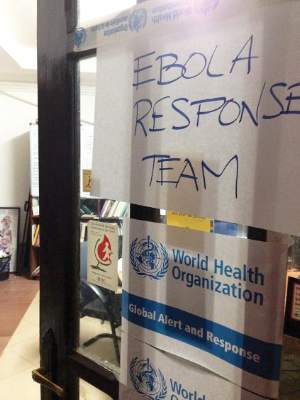The struggle to defeat Ebola virus disease continues globally, although it may not always make the headlines. To catch up on what you may have missed, here are some notable news items and journal articles published over the past few weeks that are worth a second look.
New evidence exists of the persistence of Ebola virus RNA for up to 9 months in the semen of male survivors in Guinea, according to a research letter from the Journal of Infectious Diseases. The investigators said they cannot yet make conclusions about the infectivity of the semen, but warn that in the absence of evidence on noninfectivity, clinicians should reinforce the importance of safe sex practices among Ebola survivors.
Americans traveling to countries affected by Ebola virus disease (EVD) frequently did not use major health precautions , reported a research letter in Emerging Infectious Diseases, despite federal travel warnings for EVD-affected countries and the consequences of a febrile illness developing. The authors said public health agencies should work closely with communities whose members are likely to visit friends or relatives abroad and with medical providers to increase the use of travel health precautions.
Using histories of household members of Ebola virus disease survivors, researchers in London and Sierra Leone calculated the risk of EVD by age and exposure level, adjusting for confounding and clustering. They found a decidedly lower risk for children aged 5-19 years which, after adjustment for exposure, suggests decreased susceptibility in that age group.
Researchers are adopting an increasingly complex view of antibody-mediated immunity to enveloped viruses like Ebola, according to a commentary in Pathogens and Disease. The authors note that with Ebola and other filoviruses, there are multiple discordances in which neutralizing antibodies fail to protect animals, and others in which antibody-mediated protection is observed in the absence of measured virus neutralization.
Patients recovering from EVD who do not meet the case definition for acute disease pose a low infection risk to health care providers 6 weeks after clearance of viremia, according to a report in The Lancet Infectious Diseases.
A study of Ebola virus disease (EVD) survivors in Western Area, Sierra Leone, found that late recrudescence of severe EVD appears to be rare. The investigators discovered no evidence for an effect of infecting dose (as measured by exposure level) on the severity of disease.
A study in the journal Virus Evolution showed that linked genomic and epidemiologic data can not only support contact tracing of EVD cases, but also can identify unconventional transmission chains involving body fluids, including semen. The authors said rapid Ebola virus genome sequencing, when linked to epidemiologic information and a comprehensive database of virus sequences across the 2013 Sierra Leone outbreak, provided a powerful tool for public health epidemic control efforts.
A cluster of health care workers with EVD in Sierra Leone is one of the largest ever reported, according to a recent study in Clinical Infectious Diseases, and most health care workers with EVD had potential virus exposure both inside and outside of hospitals. The authors said prevention measures for health care workers must address a spectrum of infection risks in both formal and informal care settings as well as in the community.
Previously unanticipated, late, severe relapses of Ebola virus can occur , says a report in The Lancet, and fundamentally redefines what is known about the natural history of Ebola virus infection. The authors said vigilance should be maintained in the thousands of Ebola survivors for cases of relapsed infection.
A report in Emerging Infectious Diseases relates the case of an Ebola virus disease survivor who became pregnant and gave birth to her child in the United States, and the implications of the case for infection control practices in obstetric services.
Four global commissions reviewing the recent EVD epidemic response consistently recommended strengthening national health systems, consolidating and strengthening World Health Organization emergency and outbreak response activities, and enhancing research and development in a PLOS Medicine report.
A recent study in Infection Control and Hospital Epidemiology claimed that implementation of checklists and scheduled pauses could potentially mitigate 76.5% of all risks to health care providers who are providing care to Ebola virus–infected patients while wearing high-level personal protective equipment.
On Twitter @richpizzi





